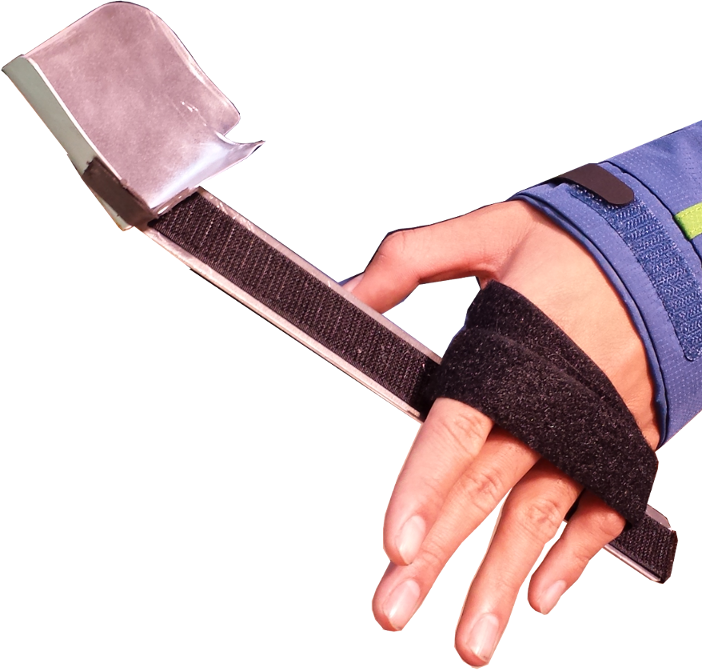


Our client was the occupational therapist of a 12-year-old girl with spastic quadriplegic cerebral palsy. Because of her condition, she wasn't able to use traditional utensils or eat without assistance. The goal of my team of four was to create a product that allowed her to do so.
We began by interviewing the therapist to learn more about our client and the problem we were trying to solve. I did a user observation at our client's school and watched how she eats different kinds of food and uses different tools. We researched existing utensils for people with physical disabilities, noting aspects that might be useful for our design. We brainstormed many different ideas and made mock-ups of our favorites, shown below. I constructed the fork on the left, which has a soft grip meant to go between the second and third fingers, our client's preferred place to hold things.



Our client used each mock up with a few different kinds of food while I observed. I found that the angled fork and split finger grip both worked well, so we decided to include aspects of both in our final design. I also noticed that our client rotated the fork in a way that made it difficult to get food off of it, so we decided to orient the prongs on the head so that it could be eaten off from any direction.
We decided on our final design, then ordered the components online and constructed it in the machine shop, shown below on the left. After constructing our prototype, we tested it with different kinds of food to ensure that it worked. We wrote a formal report, I created a poster (shown below on the right), and we presented our product, the Friendly Fork, at a student design showcase. We gave the Friendly Fork to our client. I loved being able to create something that someone uses every day, and it really inspired me to go into product development.
